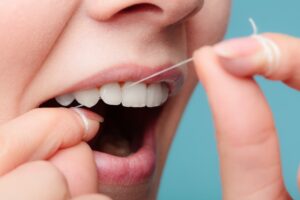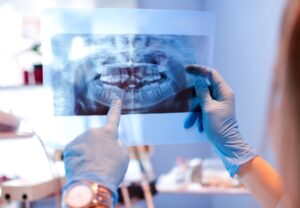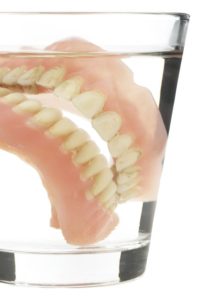Header logo
header top contact widget
Blog Archives
Recent Posts
Categories
Archives
- September 2024
- August 2024
- July 2024
- June 2024
- May 2024
- April 2024
- March 2024
- February 2024
- January 2024
- December 2023
- November 2023
- October 2023
- September 2023
- August 2023
- July 2023
- June 2023
- May 2023
- April 2023
- March 2023
- February 2023
- January 2023
- December 2022
- November 2022
- October 2022
- September 2022
- August 2022
- July 2022
- June 2022
- May 2022
- April 2022
- March 2022
- February 2022
- January 2022
- December 2021
- November 2021
- October 2021
- September 2021
- August 2021
- July 2021
- June 2021
- May 2021
- April 2021
- March 2021
- February 2021
- January 2021
- December 2020
- November 2020
- October 2020
- September 2020
- August 2020
- July 2020
- June 2020
- May 2020
- April 2020
- March 2020
- February 2020
- January 2020
- December 2019
- November 2019
- October 2019
- September 2019
- August 2019
- July 2019
- June 2019
- May 2019
- April 2019
- March 2019
- February 2019
- January 2019
- December 2018
- November 2018
- October 2018
- September 2018
- August 2018
- July 2018
- June 2018
- May 2018
- April 2018
- March 2018
- February 2018
- January 2018
- December 2017
- November 2017
- October 2017
- September 2017
- August 2017
- July 2017
- June 2017
- May 2017
- April 2017
- March 2017
- February 2017
- January 2017
- December 2016
- November 2016
- October 2016
- September 2016
- August 2016
- July 2016
- June 2016
- May 2016
- April 2016
- March 2016
- February 2016
- January 2016
- December 2015
- November 2015
- October 2015
- September 2015
- August 2015
- July 2015
- June 2015
- May 2015
- April 2015
- March 2015
- February 2015
- January 2015
- December 2014
- November 2014
- October 2014
- September 2014
- August 2014
- July 2014
- June 2014
- May 2014
- April 2014
- March 2014
- February 2014
- January 2014
- December 2013
- November 2013
- October 2013
- September 2013
- August 2013
- July 2013
- June 2013
- May 2013
- April 2013
- March 2013
- February 2013
- January 2013
- December 2012
- November 2012
- October 2012
- September 2012
- August 2012
- July 2012
- June 2012
Save Money & Time At The Dentist! Practice Effective Home Care.
Posted on Sep 22, 2020 by William J. Claiborne, DDS MS
If you could prevent a deadly disease by devoting 5 or so minutes a day to a few at-home basics, you’d probably be all in. Of course, we know that ample sleep, daily exercise and a healthy diet is beneficial to our health. What some people don’t know is the intricate connection between oral health and overall health.
Adults are becoming more aware of how the health in their mouths impacts the risk of developing serious, and even deadly, diseases. To begin, periodontal (gum) disease is the nation’s leading cause of adult tooth loss. The challenges associated with dentures and partials can cause a lifetime of frustrations, costs and psychological woes.
As devastating as tooth loss can be to one’s overall health, it is now known that the bacteria of gum disease can become blood borne. Research has shown this infectious bacteria can trigger inflammatory reactions elsewhere in the body, correlating to heart disease, stroke, high blood pressure, some cancers, diabetes, arthritis, impotency, preterm babies and more.
It is wise to have regular dental check-ups without fail. These 6-month visits can remove built-up plaque from teeth, tend to gum inflammation, and catch small problems before they become big ones. However, what you do in-between these visits can have a major impact on your oral health.
Below are some tips to make your oral care at home more effective …
• Your Toothbrush – Plaque is a buildup of oral bacteria that coats teeth and gums. If not removed daily, it forms a hardened mass of calculus (or tartar) attached to teeth. Calculus cannot be brushed or flossed away (and is what your hygienist is scraping off teeth during cleanings).
– An electric toothbrush can help in the prevention of tooth loss. Studies have shown that electric brushing promotes better gum health and slower progression of gum disease. It is also said to reduce tooth loss by 20 percent. Many of the newer models include timers to indicate the time needed for each quadrant of your mouth. This is your teeth divided into 4 sections. Some also warn when using too much pressure.
– If you prefer a manual toothbrush, stay away from stiffer bristles, which can be damaging to tooth enamel. Also, avoid pressing down firmly or using a scrubbing, ‘back & forth’ motion. Hard bristle toothbrushes can also damage tender gum tissues. Use a circular motion over both sides of each tooth and along the tops with gentle pressure. (Hint: if your bristle are flayed out after a couple of months, you’re pressing down too hard.)
– Whether using a manual or electric tooth brush, it is necessary to brush twice a day for effective results. In order to thoroughly remove the sticky film of plaque from teeth, brush at least two minutes each time.
– After each brushing, brush your tongue with your toothbrush. The tongue has grooves and pores where oral bacteria breed and thrive. Brushing the tongue will uproot these organisms and help to significantly reduce the bacteria level in your mouth.
• Your Dental Floss – Another way to improve gum health, lower cavity risk, and prevent tooth loss is through flossing. It is estimated that only 31 percent of American adults floss on a daily basis. Because brushing cannot dislodge all food particles caught between teeth, daily flossing should be a part of oral hygiene routines.
– Proper flossing is easy for those who are in the habit of it and takes less than a minute. However, the key word here is “proper.” Flossing is best done with about 18 inches of floss. We recommend unwaxed but people with tight teeth find waxed helps them avoid having to ‘pop’ in-between teeth, which can cut into tender gum tissues. Wrap both ends of the floss around the forefingers. Use the thumbs and middle fingers to help maneuver the floss.
– Go slowly as you move the floss back and forth to get in-between and scrape down each tooth’s side several times. Move the floss just slightly below the line where teeth meet gum tissues to dislodge bacteria at the base of teeth. Adjust the floss so you have a clean section after flossing every 3-4 teeth. Be sure to scrape the backs of molars (or the farthest back teeth) on top and bottom.
– For those who have problems with manual dexterity or find the maneuver awkward, water flossers are effective alternatives (shown to be just as effective as manual flossing) and easy to use. A water flosser pulsates a stream of water between teeth that is forceful enough to dislodge trapped food bits but without harming teeth or gums. They are affordable, easy to purchase online or in many stores, and easy to use.
• Your Oral Moisture – Having ‘dry mouth,’ the frequent state of oral dryness, can cause bad breath and lead to higher risks of cavities and gum disease. Saliva is your mouth’s natural rinsing agent that helps cleanse oral bacteria from the mouth. This keeps bacteria to a minimum and their ability to cause problems at lower risk.
– When saliva flow is insufficient, however, bacteria ‘hang around’ in the mouth longer and multiply rapidly. Periodic dry mouth can occur from consuming alcoholic beverages, caffeine and is a normal part of the aging process. Certain medications can also cause oral dryness. These include antihistamines and some prescribed for depression and urinary incontinence. Medical conditions, including acid reflux, sinus infections, diabetes and bronchitis can also cause dry mouth. A bad cold, snoring or just being in the habit of breathing through the mouth are drying as well.
– And the worst culprit of all for dry mouth? Smoking.
– Drink lots of water throughout the day. (Sports drinks and colas don’t count.) If you take medications that have drying side effects, use an oral rinse that replenishes saliva. There are several available over-the-counter.
• Your Diet – What you eat and drink can easily undo all the good you’ve done in your oral home care routine that day. And, you may not even know some of these consumables are putting your smile at risk. These include:
Sugar & Carbs: The American population over-indulges in sweets and carbohydrates to an often unhealthy extent. The obesity rate in the U.S. (nearly 40% of adults) makes it pretty clear this isn’t occurring from eating green beans and grilled fish. The problem for your smile is how oral bacteria are super-charged by the foods we should be avoiding or enjoying on a limited basis. Our diets now are boosting the reproductive ability of oral bacteria. And, since many of these foods stick to teeth, the potential for damage is much higher.
Caffeine: Caffeine has a drying effect on oral tissues. A dry mouth means less saliva flow, which gives oral bacteria less opportunity to be rinsed from the mouth efficiently. Caffeinated beverages include coffee, tea, colas, and many energy drinks. While not caffeinated, alcoholic beverages are also drying to oral tissues. Remember, oral bacteria is the source of the majority of problems in the mouth.
Wine (and other alcoholic beverages): While wine is said to be good for you, how it is consumed creates a particular problem when it comes to your smile. Anytime you eat or drink, your mouth experiences an acid attack, which is a normal part of the digestive process. However, this acid is so potent that it can soften tooth enamel, leaving teeth vulnerable to decay for about 30 minutes. As most people do, sipping wine over a period of time simply draws out this acid bath. Add to that the acidity of wine and your smile gets a one-two punch for a higher risk of decay.
Citrus & acidic foods and beverages: The acidity in citrus (oranges, lemons, grapefruit, etc.) can erode tooth enamel, leaving them more susceptible to decay. And, it’s not just tart-tasting fruits that bring this risk. Foods with vinegar (pickles, salad dressings, etc.) and tomatoes or tomato-based foods (red pasta sauce, catsup, etc.) have an acidic effect on tooth enamel that heightens the risk of decay.
Snacking: As mentioned above, every time you eat or drink, an acid attack begins in the mouth. This means that when you sip your soda or nibble on a cookie, an acid attack kicks in. When your mouth is experiencing frequent acid attacks during the day, it’s easy to see why the damage can cause such high risks to tooth enamel and gum tissues.
Be aware of the recommendations above to do a better job at having a clean mouth. If you feel you may be experiencing symptoms of periodontal disease, however, don’t delay. You should be seen at your earliest convenience for treatment since this disease will only worsen over time.
Signs of gum disease include tender gums that bleed easily when brushing, gums that darken in color to red (versus a healthy pink), frequent bad breath, and gums that pull away from teeth (receded gums) and expose darker, root areas of the tooth.
As a periodontist, I specialize in gum tissues (as well as dental implants). Our environment optimizes patient outcomes and comfort throughout treatment. Call (828) 274-9440 to schedule an examination or begin with a consultation appointment.
Smoking, Vaping Lead To Gum Disease, Tooth Loss.
Posted on Sep 15, 2020 by William J. Claiborne, DDS MS
With all good intentions, adults occasionally trade one bad habit for another. For instance, a commitment to exercise more often for weight loss can easily backfire when justifying a thick smoothie as a daily reward.
This is what worries me about Vaping. Vaping, the use of e-cigarettes, hit the market around 2007. It is designed to deliver nicotine through a vapor. Although the vapor is generally not labeled as harmful (it’s not “safe”, either), its nicotine is no less harmful to the user as that delivered via cigarette smoke.
Unfortunately, many cigarette users switched to vaping based on the perception that “e-cigs” were a safer alternative. For those who wanted to wean themselves off of cigarettes through this switch, very few achieve that goal as a result.
A 2018 report by the National Academy of Sciences, Engineering, and Medicine concluded there was “evidence that e-cigarette use increases the frequency and intensity of cigarette smoking in the future.”
Teens have been most susceptible to the hazards of vaping. It is the most commonly used tobacco product among U.S. youth. E-cigarette use among middle and high school students increased 900 percent during 2011-2015. According to the Surgeon General, 1 in 5 high school students and 1 in 20 middle school students were using e-cigarettes in 2018.
Unfortunately, nicotine exposure can harm the brain as it develops, until about age 25. During adolescence, nicotine use can affect learning, memory and attention span as well as increase their risk for future drug addictions. (https://e-cigarettes.surgeongeneral.gov/documents/surgeon-generals-advisory-on-e-cigarette-use-among-youth-2018.pdf)
As a periodontist in Asheville, NC, my concern when it comes to oral health is what many cigarette smokers and vapers don’t realize when it comes to high risks to their smiles.
In our periodontal dental office, I’ve seen how significantly the habit of cigarette smoking can have on one’s smile. It’s no secret that smoking cigarettes can stain teeth and cause bad breath. However, nicotine in any form is a hazardous force in the mouth.
According to the American Dental Association (ADA), smoking can cause the gums to recede from teeth, exposing vulnerable tooth root sections. This enables easier entry of oral bacteria into the structures that support tooth roots. Smoking can also delay healing following periodontal therapy, extractions or implant placement. The longer it takes oral tissues to heal, the greater the risks for infection to develop.
Additionally, smoking increases the risks of oral cancer, lesions inside the mouth, periodontal (gum) disease, enamel erosion and tooth loss. It greatly reduces saliva flow in the mouth, which is a tremendous aid in removing bacteria and food particles from the mouth, helping to control bacteria levels. The condition of “dry mouth” also causes bad breath.
Because of the vape’s moist presence in the mouth, the assumption with vaping over smoking cigarettes is the “benefit” of oral dryness. However, this is easily dispelled when looking at the true facts.
While there are more than 7,000 chemicals found in the smoke of tobacco products, (including nicotine, tar, carbon monoxide, acetaldehyde and N-nitrosamines), nicotine is the primary addicting component. A study of some e-cigarette products found the vapor contains known carcinogens and toxic chemicals, as well as potentially toxic metal particles from the device itself.
The e-liquids delivered by these devices typically contain nicotine, propylene or polyethylene glycol, glycerin, and additives. Sound safe? Not at all.
According to the Centers for Disease Control & Prevention (CDC), a smoker has twice the risk for gum disease compared with that of a nonsmoker. (https://www.cdc.gov/tobacco/campaign/tips/diseases/periodontal-gum-disease.html)
When a patient is diagnosed with advanced periodontal disease (periodontitis), they must make a commitment of time and expense to rid this inflammatory disease from their mouths. For those who ignore its presence or assume it will get better on its own, the disease will simply progress further.
Gum disease begins with sore gums that may bleed while brushing teeth. Or, it may cause no noticeable symptoms at all in early stages.
As it worsens, gum disease will cause frequent bad breath, tender gums that turn red, gum recession, and gums that bleed easily when brushing. Pus pockets may form on the gums. As it attacks the structures beneath the gum line, teeth may loosen or shift.
As the nation’s leading cause of adult tooth loss, it brings the hard decisions (and expense) for replacement. After all, you need teeth for eating and speaking. Do you go with dental implants? Or, do you take on the challenges that come with dentures and partials? As hard as the decisions of replacing teeth can be, gum disease can bring even more devastation with it.
Research has linked the bacteria of gum disease to serious health problems. These include heart disease, stroke, preterm babies, arthritis, diabetes, impotency, some cancers and even Alzheimer’s disease. These connections occur through the infectious bacteria of gum disease entering the bloodstream through tears in diseased gum tissues.
Once in the bloodstream, the bacteria can travel throughout the body and create inflammatory reactions. This “systemic inflammation” is able to trigger the onset of some diseases and conditions or even further the development of others.
Certainly, we all have the right to determine what is in our best interest as far as our own health goes. However, I believe that many individuals end up in our office with serious gum problems and facing tooth loss because of what they did not know. Having factual information allows us to make wise decisions for our health and well-being.
As a periodontist, I have advanced skills in the treatment of all stages of periodontal (gum) disease. My dental specialty also includes the diagnosis and placement of dental implants. Here, our patients can relax under Oral or IV sedation (“twilight sleep”) while having their smiles restored. We also create a customized care program that allows each person to maintain good oral health once their treatment is complete.
 If you smoke or vape, don’t assume “that won’t happen to me.” The reason we wear seat belts in cars is because there are great risks when we do not. The risks for losing your teeth and having potent bacteria running rampant through your system is something you can take easy measures to prevent.
If you smoke or vape, don’t assume “that won’t happen to me.” The reason we wear seat belts in cars is because there are great risks when we do not. The risks for losing your teeth and having potent bacteria running rampant through your system is something you can take easy measures to prevent.
Experiencing symptoms associated with gum disease? We urge you to schedule an examination appointment as soon as possible. Call our beautiful, comfortable Asheville office at 828-274-9440. A referral is not necessary.
How To Avoid Thinning Jaw Bones That Cause “Granny Look”
Posted on Sep 10, 2020 by William J. Claiborne, DDS MS
Imagine your mouth begins to sink into your face. Deep wrinkles form around your mouth and the corners of the mouth begin to turn downward, even when you smile. Jow ls form, allowing skin to seem to loosen and hang on both sides of the face. The chin becomes more pointed and the nose and chin get closer and closer.
ls form, allowing skin to seem to loosen and hang on both sides of the face. The chin becomes more pointed and the nose and chin get closer and closer.
This sounds pretty awful. It is like a disfigurement of the face. It’s not a horror movie, though. This is real, caused by one of the most preventable of all diseases afflicting American adults. It’s a disease that affects over 47 percent of all adults over the age of 30. For adults over the age of 65, the figure rises to over 70 percent. (https://www.cdc.gov/oralhealth/conditions/periodontal-disease.html)
Amazingly, this highly prevalent disease is simply periodontal disease. Often referred to as gum disease, some people also refer to it as “perio.” These are fairly familiar terms when it comes to what adults endure. Yet, it seems to be easily ignored, which merely allows it to progress further.
Before we get into the causes (and easy prevention measures) of gum disease, let’s examine how the dreaded changes in facial appearance are related to it.
Gum disease is the nation’s leading cause of adult tooth loss. Assumed to be a normal part of the aging process, it is anything but. Yes, older adults are more prone to acquiring gum disease due to a reduction in saliva and perhaps being less efficient at oral hygiene. But losing teeth can be prevented, and should be.
The problem with losing natural teeth has to do with their roots. It is the roots of a tooth that serve a much greater purpose than most people realize. While the appearance and function of dentures and partials (albeit reduced) can be replaced, they do nothing to replace what is lost beneath the gum line.
Simply put, the lack of tooth roots is the beginning of a “melting face.” This leads to bone loss and is known as resorption. Resorption is the shrinking of the bone structures that support teeth. As tooth roots are absent, the loss of bone mass can create a number of problems – both related to oral health and in facial appearance.
Tooth roots are a living part of your skeletal structure. Tooth roots are what provide nourishment and stimulation to the jaw bones. This helps the jaws to maintain a healthy mass. When tooth roots are removed, the bones slowly begin to shrink. Although most people don’t notice anything different for a while, bone loss begins almost immediately.
As described at the beginning of this article, there is a ‘look’ of bone loss, which causes changes in facial structures. This is because the bone mass is shrinking. As it shrinks, muscles detach and facial skin hangs looser.
Initially, you may only notice more wrinkles around the mouth. As it worsens, you may realize your chin seems to be more pointed. The extreme visual change of bone resorption is referred to as a ‘granny look.’ This causes people to appear far older than their actual age.
For those who wear a denture or partial, losing jaw bone mass also causes a change in the way the denture or partial fits. For example, a denture may fit fine the first year after teeth are removed and a denture is fitted. However, you’ll eventually notice slips when biting or chewing. This is because the bone under the “arch” that supports the denture or partial is declining in height.
The changing foundation for the denture allows it to “slip” or become “wobbly.” As bone loss continues, you may experience uncomfortable rubbing on tender gum tissues while eating. You may start to bypass foods that require rigorous chewing, opting for softer foods that dissolve quickly in the mouth. Outings with friends and family seem to be overshadowed by the fear of embarrassing slips.
Eventually, even frequent applications of denture pastes or adhesives are of little help. A reline may be recommended by your dentist to reshape your denture or partial to fit the reduced contours of the gum ridge (or “arch”). Continued bone loss will require yet another reline as the ridge flattens further.
Denture wearers are typically unaware that the pressure on the gums from wearing a denture accelerates the rate of bone loss. For those who sleep in their dentures, this means that pace of bone loss occurs 24/7.
Sleeping in a denture can also add to higher risks for the flu and pneumonia. A 3-year study of more than 500 adults was published by the Journal of International Oral Health. Of the 186 (of 453 denture wearers) who did not remove their dentures for sleeping, they had over twice the risk for pneumonia than those who did. Sleeping in dentures also led to higher levels of tongue and denture plaque, gun inflammation and other oral issues.
(https://www.ncbi.nlm.nih.gov/pmc/articles/PMC4295446/)
When it comes to replacing natural teeth, there are many reasons we recommend dental implants, a major advantage being their ability to halt bone loss. Because dental implants act as replacement tooth roots, they are able to restore stimulation to the jaw bones.
Additionally, dental implants use the same, sturdy foundation as natural teeth once had. This means you can bite and chew the foods you love (including that thick steak) without fearing embarrassment or uncomfortable rubbing against tender gum tissues.
Dental implants are also designed to last a lifetime, making them a wise investment.
A particular skill of the periodontal specialty is the advanced training in the diagnosis and placement of dental implants. This training allows the specialist to determine the best dental implant type for your needs. A periodontist can also enhance your outcome through proper placement.
If you are missing natural teeth or have become frustrated with a denture or partial, call 828-274-9440 for a consultation in our Asheville periodontal dental office. During this time, we can discuss the implant system that may be most appropriate for your needs. I’ll also be happy to explain the procedural process, comfort options, and easy payment plans.
For a smile that looks beautiful and functions to support good health, don’t let the detrimental effects of dentures lead to a “granny look”. Dental implants can help you enjoy a confident, worry-free smile through your lifetime.


